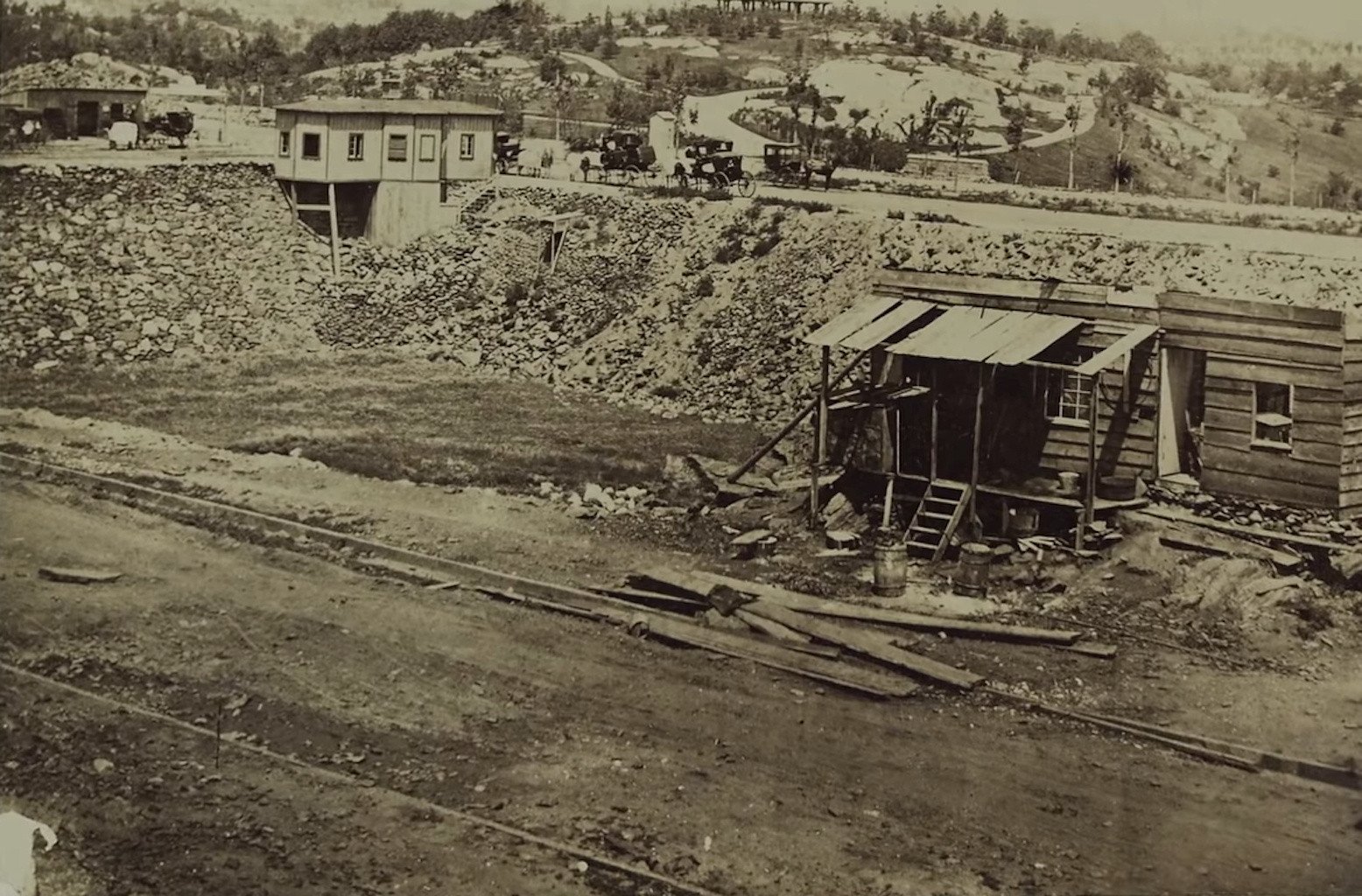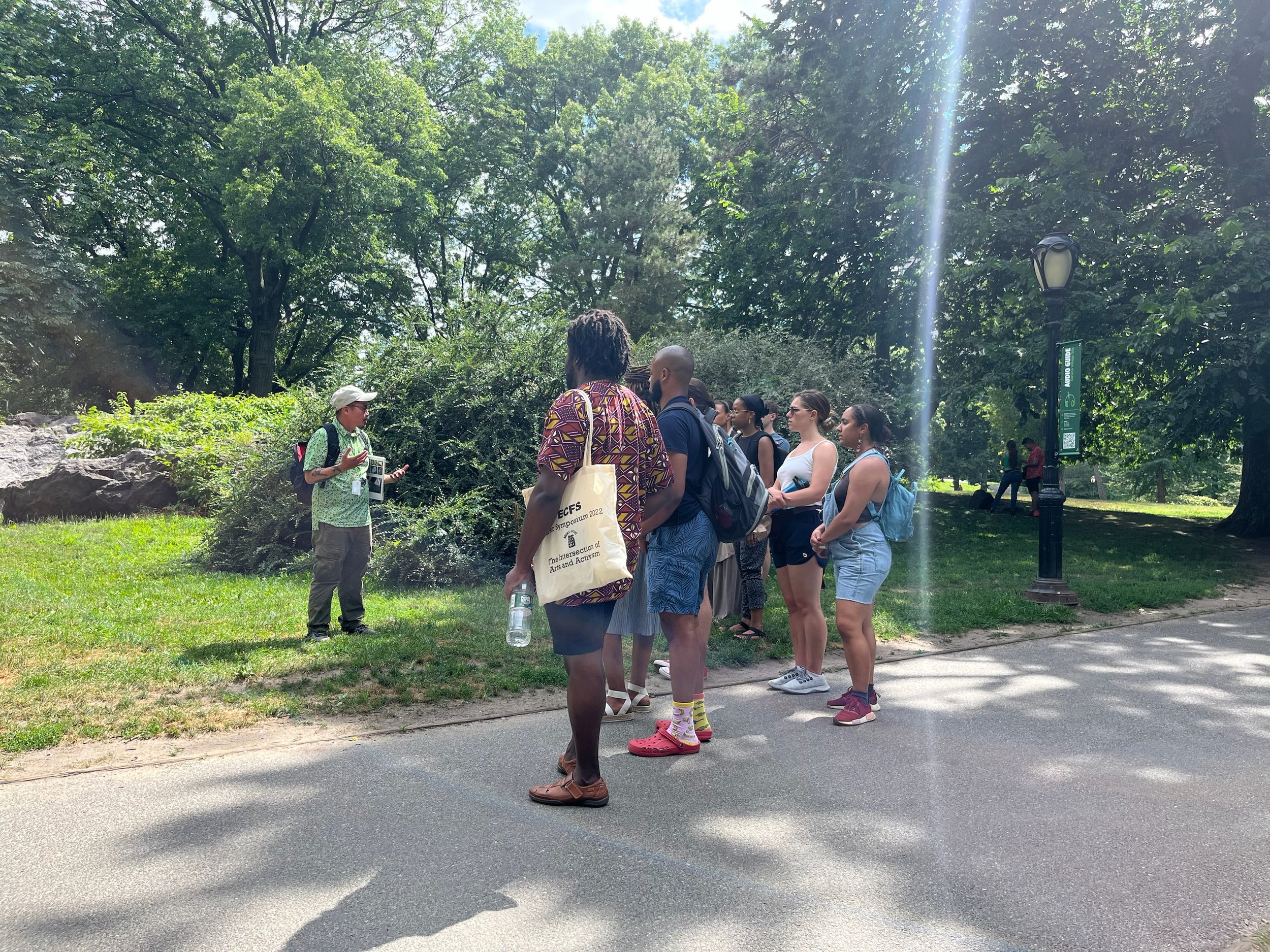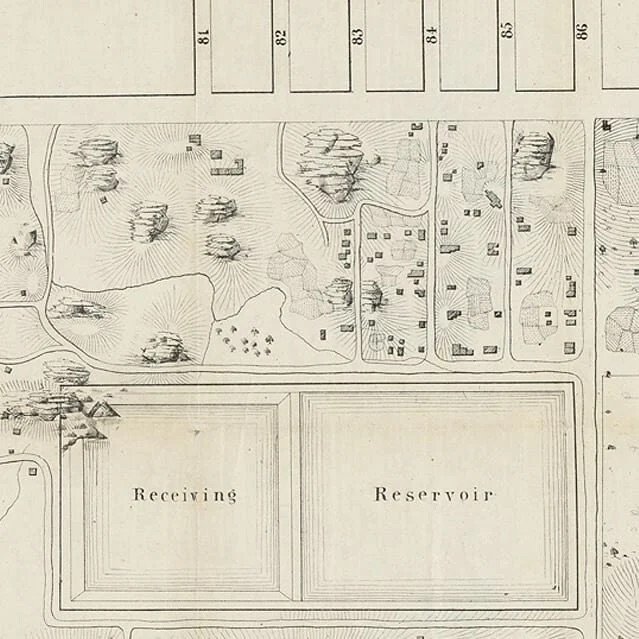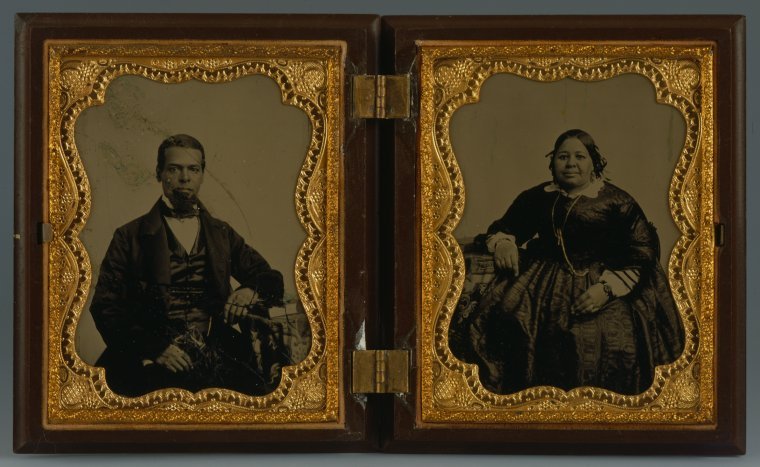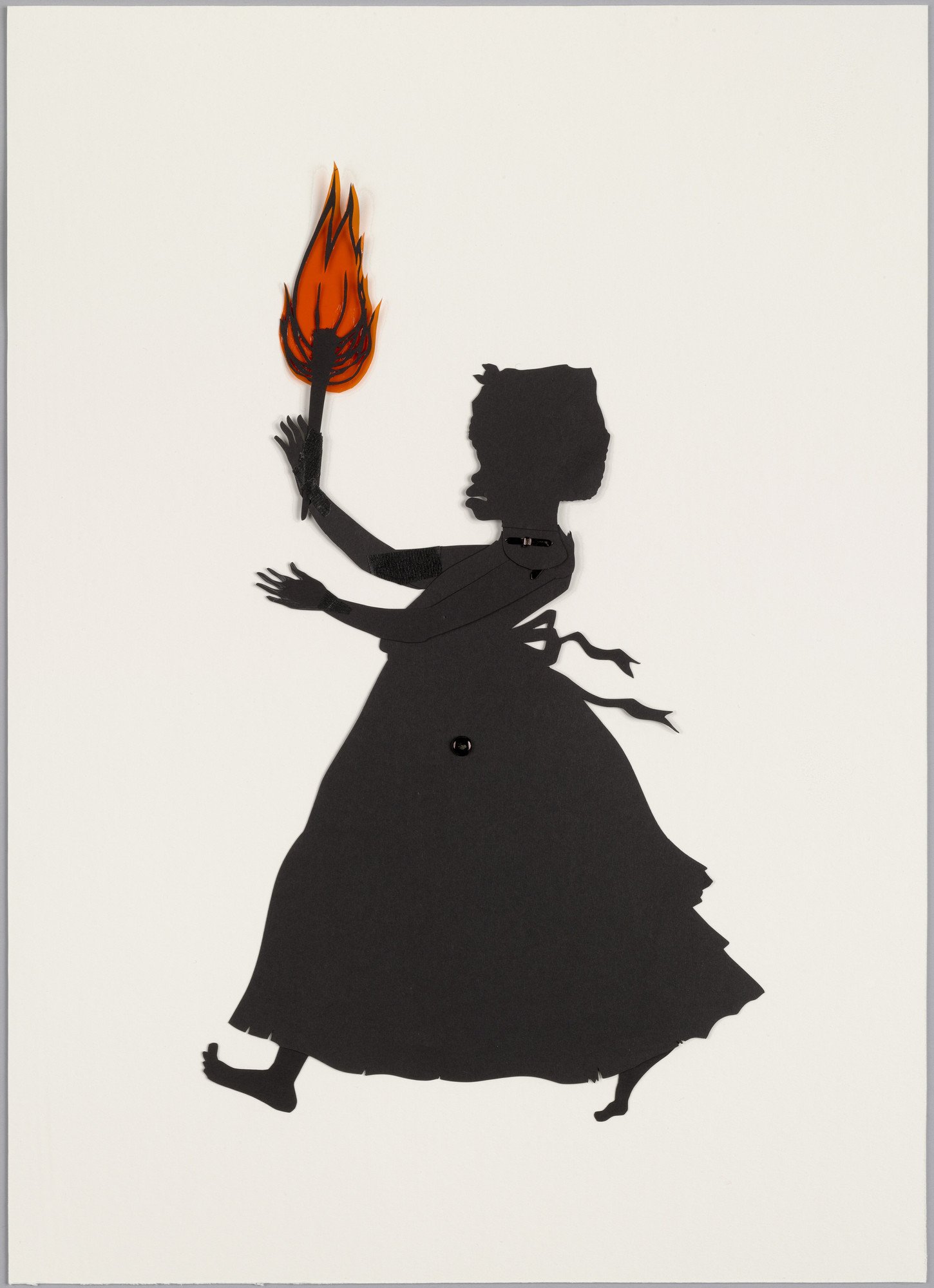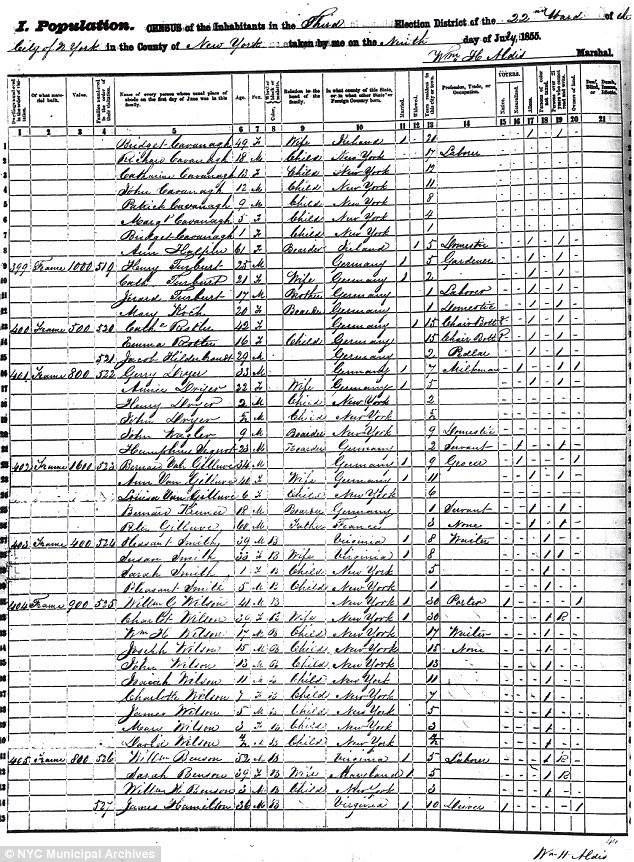WELCOME TO
july 9-10, 2022
wild project
part one: SENECA VILLAGE
Seneca Village, 81st Street and Central Park West, already mid-demolition | ~1857
Seneca Village, now Central Park, 81st Street and Central Park West | today
Excavation of Seneca Village
The cast of Man Made on a tour of Seneca Village—now covered by Central Park.
Seneca Village was a predominantly African-American community that New York City demolished in order to create Central Park.
“According to the Central Park Conservancy, Seneca Village “existed between 1825 and 1857. In 1855 there were approximately 225 residents, a population that consisted of roughly two-thirds African-Americans, one-third Irish immigrants, and a small number of Germans. There were over 50 homes in Seneca Village, plus three churches and a school.”
“When the City decided to build Central Park, it used eminent domain to acquire the land. Residents were compensated for their property and had to leave by 1857. After they dispersed, all traces of the settlement were lost to history.”
However, what did this compensation entail?
According to an affidavit filed by Andrew Williams, Seneca Village resident, “commissioners [for the creation of Central Park'] wanted to give him only $2335 even though Williams had declared that the lots he owned and his house were actually valued at $4000.” The City blatantly undervalued of the land it was looking to acquire, effectively displacing its Black population without regard for their future.
Furthermore, in the 1850s, only landowners were allowed to vote. The loss of land for the residents of Seneca Village translated directly to the loss of their voting rights.
Read more in this Daily Mail article.
Despite its physical demolition, the legacy of Seneca Village continues to this day.
Excavation has occurred, searching for the pieces of Seneca left behind and buried beneath the Park.
Art and media have opened the doors to the rediscovery of the history and generational lived experiences through this land, through this city, and through the years that have forced Seneca Village to go unnoticed in the archive. With Man Made, Dhari Noel hopes to reopen the exploration of this crucial part of New York’s history.
The cast of Man Made on a tour of Seneca Village—now covered by Central Park.
part two: THE PLAY
The layout of Seneca Village
Man Made, a new play by Dhari Noel and directed by Clare Mottola, is about New York, Power, Race, Gender, Ancestors and Descendants—in a word, Us.
It tells the story of Seneca Village, a small but mighty African American community thriving on the outskirts of a polluted, overpopulated metropolis: New York City. When the City’s elite residents call for the destruction of Seneca to make room for a landmark “Central Park,” a natural haven at the centre of an urban sprawl, the people of Seneca find themselves fighting for their homes, their lives, and their legacies.
Man Made is an interpretation of Seneca’s vibrancy and resistance as it confronted its own destruction in the name of urban renewal. Having written this play while his students led a takeover of their school to demand wholistic institutional change for Racial Equity, and as his home, the Harlem community, continues to fight the ongoing erasure ensured by gentrification, Noel is certain that Seneca Village and its legacy haunt us. Seneca screams, it laughs, it cries, it dances. It shouts, “us, us, us.”
THE TIME:
1853, then 2019
THE PLACE:
A Boardroom, Seneca Village, then Central Park West in the 80’s
The cast of Man Made
Dhari Noel and the cast of Man Made!
THE COMPANY
Click the photo of each company member to read their bio. If viewing on mobile, tap the small circle in the bottom right after clicking a photo to read more.
part three: GATHERING
History, Legacy, Remembrance.
Albro Lyons, Sr. and Mary Joseph Lyons, 1860
Another drawn map of Seneca Village
Art, Exhibitions, Projects, and Performances
The Metropolitan Museum of Art, Before Yesterday We Could Fly: An Afrofuturist Period Room
"Before Park, Black Village; Students Look Into a Community's History," New York Times (1995)
"Before Central Park: The Life and Death of Seneca Village," curated by Grady T. Turner and Cynthia R. Copeland for the New-York Historical Society (1997–1998). Review in the Times and design spread from May + Watkins Design
The Seneca Village Project, formed by Cynthia Copeland (New-York Historical Society), Nan Rothschild (Barnard), and Diana Wall (City College) in 1998. SVP archaeological repository (NYC Landmarks Preservation Commission)
Keith Josef Adkins, The People Before the Park (Premiere Stages, September 2015). New York Times Review and NPR Review
Seneca Village Unearthed, digital exhibition curated by Jessica Striebel MacLean (February 2018)
Juneteenth 2022 Celebration in Central Park (Central Park Conservancy) - curated by Andrea Buteau (CPC) and Andromeda Turre.
Present Day Books, Articles, and Press
Brent Staples, “The Death of the Black Utopia,” New York Times (2019)
Brent Staples, "In Search of the Black Utopia," New York Times (2022)
"Uncovering the History of Seneca Village in New York City," CBS News (February 6, 2022)
"Seneca Village, New York City," National Park Service (last updated 2019)
Marilyn Nelson, My Seneca Village (Namelos, 2015)
"Uncovering the History of Seneca Village in New York City," CBS News (February 6, 2022)
Roy Rozenzweig and Elizabeth Blackmar, The Park and the People: A History of Central Park (Cornell UP, 1998) This is the book that revived public interest in Seneca Village!
Sara Cedar Miller, Before Central Park (Columbia UP, 2022)
Who Am I? by Beverly Tatum (2000)
Rudine Sims Bishop, "Mirrors, Windows, and Sliding Glass Doors” (2015)
Washington Independent Review of Books: Before Central Park, reviewed by John P. Loonam, Cherry Picking Alum!
Kara Walker, “Shadow puppet from Testimony: Narrative of a Negress Burdened by Good Intentions,” 2004 | MOMA
“I do not know from where my ancestors were abducted. I cannot tell you what the air smells like there. I don't know what sound the waves and soil speak. These things were stolen from me as they were from them. I think it is one of the deepest evils to become a thief of place, to make someone a stranger to their home, and then mark their relationship to the land by bondage instead of love. To steal place has less to do with power than with hatred. How much must one hate oneself and one's life and one's own land to run around chasing everyone else's? I used to think colonization was about ego, and maybe it is. But maybe it's not that the oppressors think they're worthy of more but that they believe their present self is, in fact, worthless. It's the work of people incapable of perceiving their dignity without attempting to diminish someone else's. It is no surprise to me then that these same powers, in the end, care so little for the land they are desperate to conquer. It was never about love or curiosity or care but a violent act of self-soothing.”
-Cole Arthur Riley, This Here Flesh
Frederick Douglass, ~1847/52, quoted in Man Made
“A play is a blueprint of an event: a way of creating and rewriting history through the medium of literature. Since history is a recorded or remembered event, theatre, for me, is the perfect place to 'make' history—that is, because so much of African-American history has been unrecorded, dismembered, washed out, one of my tasks as a playwright is to—through literature and the special strange relationship between theatre and real-life—locate the ancestral burial ground, dig for bones, find bones, hear the bones sing, write it down.”
-Suzan-Lori Parks, The America Play and Other Works
Frederick Law Olmsted, architect of Central Park | 1850
A page of the 1855 US Census—264 men, women and children were recorded to live in Seneca Village
Podcasts, Music, and More
Bowery Boys History: Seneca Village
Poetry Unbound: Ali Cobby Eckerman — Kulila
"We Real Cool" by Gwendolyn Brooks
It Is Maybe Time to Admit That Michael Jordan Definitely Pushed Off by Hanif Abdurraqib
https://poets.org/poem/it-maybe-time-admit-michael-jordan-definitely-pushed
Harlem, Inc: The Untold Stories, directed and produced by Derrick “Vito” Jones"


